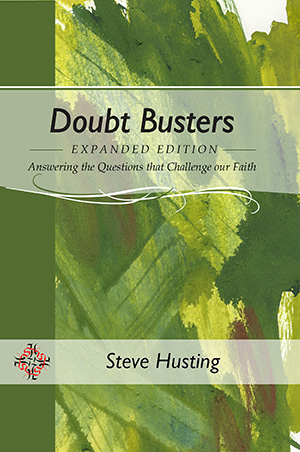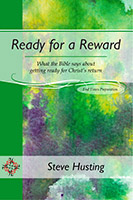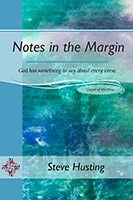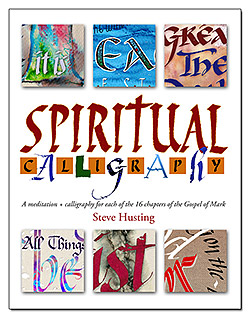I thought I would change up my morning times by looking up the note sin advance for passages I’ll meditate on, all taken from my various study Bibles and commentaries. On these pages I am adding the notes above the meditation, followed by the meditation itself, so you’ll see both in the blog.
Here is 1 John 1:1-4. Let me know what you think of the idea and layout. By including the notes, we’ll both be on the same page with the meditation, although my own life history will make its way into the story. I expect to follow this format through 1 John, 2 John, and 3 John on Fridays until done.
On this page, at the bottom, are listed all of my sources.
Chapter 1 (NKJV)–the verses in this chapter were taken from this version. Each chapter will be from a different version to avoid copyright issues.
What Was Heard, Seen, and Touched (NKJV–this heading was taken from the NKJV Bible)
(Bible Knowl Comm NT) “The first four verses of the epistle constitute the prologue.”
v. 1, That which was from the beginning, which we have heard, which we have seen with our eyes, which we have looked upon, and our hands have handled, concerning the Word of life—
(Bible Knowl Comm NT) “from the beginning … referred to the beginning of the gospel proclamation. … The antichrists brought new ideas, not those which were ‘from the beginning’ of the gospel era.” So this text is a polemic. “concerning the Word of life … It seems more natural to understand the phrase in the sense of ‘the message about life. … ‘life,’ not ‘word,’ is personified. …about God’s Son, who is Life.”
(Vincent’s II) “From the beginning. … contrasted with was in the beginning” which would refer to the absolute beginning, “looking back into eternity. … In the words ‘from the beginning,’ the writer looks back to the initial point of time and describes what has been in existence from that point on.” “Of life. Lit., the life. … As John does not purpose to say that he announces Christ as an abstract single idea, but that he declares his own concrete historical experiences concerning Christ,—so now he continues, not the Logos (Word), but concerning the Word, we make annunciation to you.”
(ESV) “John was an eyewitness to the physical and historical reality of Jesus’ life on earth. His message is not based on an ecstatic vision, grand idea, or mere human religious conviction.”
(Arc) “the one who has existed from eternity ‘became flesh’ (Jn 1:14).”
(Apologetics) “Docetism (from the Greek word dokein, meaning ‘to appear’) denied the incarnation of the Son of God.” This intro refutes that view.
v. 2, the life was manifested, and we have seen, and bear witness, and declare to you that eternal life which was with the Father and was manifested to us—
(Bible Knowl Comm NT) “The Incarnation is unquestionably in view.”
(Vincent’s II) “Was manifested. … The Word became flesh, contemplates simply the historic fact of incarnation. The life was manifested, sets forth the unfolding of that fact in the various operations of life.” “That eternal life. … A particularly faulty translation…” Should be “the eternal life … as the special gift of Christ. … describes the life in its quality of not being measured by time, a larger idea than that of mere duration.” “With the Father. … In living, active relation and communion with the Father.”
(Moody) “Christ is what has existed from the beginning of eternity past. … John wrote about God’s Word incarnate in Jesus who brings eternal life.”
(Cultural) “the Life” = “In Johannine literature, the phrase is approximately synonymous with the kingdom of God.”
v. 3, that which we have seen and heard we declare to you, that you also may have fellowship with us; and truly our fellowship is with the Father and with His Son Jesus Christ.
(Bible Knowl Comm NT) “he later, in 2:12-14, made it perfectly clear that he regarded the readers as genuine Christians, his goal was obviously not their conversions. … The danger to the readers was that they might be allured into darkness by the … antichrists.”
(Vincent’s II) “3. The regular course of the sentence, broken by ver. 2, is now resumed.” “Fellowship. … The true life in man… consists in fellowship with God and with man. … it expresses the enjoyment or realization of fellowship” and not merely the fact of it.”
(Moody) “The immediate purpose for wanting to proclaim his experience of seeing and hearing Jesus is so his readers” may have fellowship with one another and with God and Son.
(ESV) “The purpose of this proclamation is not just forgiveness of people’s sins (as a simplified view of evangelism would have it) but is far richer, … for believers’ fellowship is with the Father and his Son. … “made possible by the mediation of the Son.”
(Wiersbe) Fellowship = “ ‘to have in common.’ …God in His grace sent Christ to have something in common with us. … He took a human nature so that by faith we may receive the very nature of God!” The unregenerate have nothing in common with God.
(Life) “our fellowship is grounded in the testimony of God’s Word. Without this underlying strength, togetherness is impossible.”
v. 4, And these things we write to you that your joy may be full.
(Bible Knowl Comm NT) “If the readers retained their true fellowship with God and with His apostles, no one would be any happier than John himself.”
(Vincent’s II) “Full. More correctly, fulfilled.”
(Moody) If the readers held fast to the apostolic truth, it maintains their “relationships and increases their joy.”
(Weirsbe) Joy = “it is a wonderful by-product of our fellowship with God.”
FIRST JOHN 1 MEDITATION vv. 1-4.
These opening verses affirm that Jesus Christ in the body was in communion with God the Father. The verses refute the idea that flesh is evil and that God wants nothing to do with it. To know Jesus was to know the life of the Father and the Son in fellowship. To see the gloves move is to know the motions of the unseen hands within. John wants us to “know” God from that perspective, of joining and enjoying the fellowship of the Father and the Son.
That fellowship could be seen, heard, and touched in the person of Jesus. (“No man ever spoke like this man!” “You speak the words of eternal life.”) Jesus lived the life of constant communion with the Father, and His followers noticed the difference between Him and everyone else who was lost. John enjoyed being in the presence of Jesus, with the Father and the Son. (Shouldn’t others be able to enjoy our company?) Enjoying Christ’s presence is to be our joy as well, both in the community of believers, and within, where the Father and the Son dwell in those who have His commandments and keep it (John 14:21-23). When God clothes Himself with a human body, Jesus is the result. The life of Jesus shows how we too would manifest God in us if we have His word and keep it with a faith that works in love. John wants them to know these literally down-to-earth facts about Jesus and His life with God so the members of the church will not be fooled by those who enter the church with conflicting doctrine. This life Jesus had with the Father is to become our life too; if anyone convinces people otherwise, their faith life will go in the wrong direction, and their spiritual growth and fellowship with God will be impaired.
SOURCES – BIBLIOGRAPHY
(Apologetics) = The Apologetics Study Bible
(Arc) = NIV Archaeological [not “Cultural”] Study Bible
(Bible Back Comm 4) = Zondervan Illustrated Bible Backgrounds Commentary vol. 4
(Bible Knowl Comm NT) = The Bible Knowledge Commentary, New Testament
(BLB) = BlueLetterBible.com
(Cultural) = NIV Cultural Backgrounds Study Bible
(ENT) = Encountering the New Testament
(ESV) = English Standard Version Study Bible
(Life) = Life Application Study Bible, New American Standard Version
(Moody) = The Moody Bible Commentary
(NKJV margin) = Holy Bible, The New King James Version, margin note
(Prophecy) = Tim LaHaye Prophecy Study Bible
(Steve) = Personal observation
(Strong’s) = Strong’s number as in Blue Letter Bible
(Vincent’s I or II) = Vincent’s Word Studies in the New Testament, vol. I or II
(Wiersbe) = The Wiersbe Study Bible





Pingback: Meditations on 1 John 3:1-3, with Notes - Alive To GodAlive To God
Pingback: Meditations on 1 John 3:4-9, with Notes - Alive To GodAlive To God
Pingback: Meditations on 1 John 3:10-14, with Notes - Alive To GodAlive To God